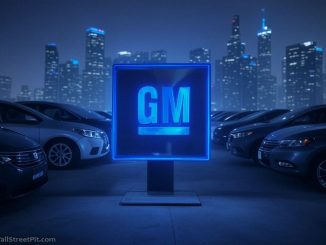There’s an interesting story in the WSJ concerning GM’s decision to build its new small car in Michigan as opposed to Tennessee, Wisconsin or overseas. All of those places were in the running for the business. This is of more than passing interest, since you and I are heavily invested in this company and would, I think, like to see them making good business decisions.
First, the battle between Michigan, Tennessee and Wisconsin:
When it was deciding where to build its new compact car, General Motors Corp. made a point of saying it would push politics aside and use strictly commercial criteria.
So Tennessee’s three top officials were astonished last month, in a meeting with GM, when they were told the first two criteria were “community impact” and “carbon footprint” — or how the choice would affect unemployment rates and carbon-dioxide emissions.
“Those didn’t strike us as business criteria at all,” said Tennessee Sen. Lamar Alexander, who was joined in the meeting by fellow Republican Sen. Bob Corker and the state’s Democratic governor, Phil Bredesen. Those factors, Mr. Alexander said, “seemed odd for a company struggling to get back on its feet.”
On June 26, after a monthlong competition, GM tapped an existing factory in Orion, Mich., pushing aside competing plants in Spring Hill, Tenn., and Janesville, Wis.
All the sites had merits, but the Michigan plant had additional attractions. It is embedded in a struggling state that is a Democratic stronghold. The Orion site, 35 miles from GM’s Detroit headquarters, is also close to tens of thousands of current and former United Auto Workers union employees, whose pressure previously helped persuade GM to scrap plans to build the car overseas.
The area has one of the region’s highest unemployment rates, at 12.4%, though the Wisconsin site’s was even higher, at 12.9%. Janesville, by contrast, offered a less-expensive labor pool, according to people briefed on the plan. In Spring Hill, GM has a new, $225 million paint shop. The Orion plant’s paint shop needs to be replaced.
Set to emerge from bankruptcy within weeks, GM declined to disclose the factors it weighed in picking Orion, but said the process was free of political meddling.
“It’s in the best interest of all involved to not discuss the selection criteria for the small-car plant,” said GM spokeswoman Sherrie Childers Arb. “All three plants have individual merits, but when all told, the Orion plant scenario provided the best business case.”
Now, there is one factor that probably tipped things in favor of Michigan — money. The state offered $779 million in tax credits over 20 years, $130 million in federal funds for worker training and another $102 million came from local political districts. Reportedly, that dwarfed anything the other two states came up with. So why doesn’t GM just come out and say it was all about the money? It seems like that would be a whole lot better than clamming up and encouraging rumor mongers (like me) and conspiracy theories.
One is also inclined to ask how a state as flat broke as Michigan can come up with that kind of dough. I suppose the answer is that they have a friend on the Potomac.
An even more pertinent question might be why is this car being built in the United States at all. Remember, originally the car was to be built in China and imported until the UAW raised a stink, rallied its friends on Capitol Hill and caused the company to back down.
Here are some observations from the article about this point:
Even with the labor savings, analysts question the logic of building a compact car in the U.S. Margins are so tight that even Toyota and Honda have opted to build their smallest models in countries with lower labor costs.
“Virtually nobody makes cars that size in the U.S.,” said CSM Worldwide automotive analyst Michael Robinet. “There is a reason why GM at the outset was going to bring this car in from China.”
Various estimates peg GM’s losses on U.S.-built small cars at roughly $1,000 to $2,000 per vehicle sold in recent years. Lawmakers and congressional staffers involved in the compact-car competition said GM acknowledged the company expected to struggle to break even on the venture.
GM views small cars as central to its bid to become what Mr. Clarke called “the greenest car company in the world.”
Anticipating higher gasoline prices, the cars will be “more and more toward the sweet spot of the market” when they roll off the assembly line sometime after 2012, Mr. Clarke said.
Keep in mind that this car is crucial for GM. They currently don’t have a competitive small car and quite frankly have never produced one successfully in this country. Trucks, SUVs and mid-sized cars are their bread and butter. The small car is an outgrowth of the ill-considered changes to the CAFE rules and the Obama administrations dreams of green. It has to succeed or it might well blow the entire investment out of the water. On second thought, amend that last sentence to read it might cause the American taxpayer to pony up substantially more money to feed this beast.
I have to say as a shareholder, I’m a little concerned about these first steps by my company.
- Bulenox: Get 45% to 91% OFF ... Use Discount Code: UNO
- Risk Our Money Not Yours | Get 50% to 90% OFF ... Use Discount Code: MMBVBKSM
Disclaimer: This page contains affiliate links. If you choose to make a purchase after clicking a link, we may receive a commission at no additional cost to you. Thank you for your support!




Leave a Reply